
Pages from a 1936 trade catalog, Erwin Geyer, Lauscha, Germany (bib no. 101943), illustrating ornaments, as well as other decorative items for Christmas.
For many, ‘tis the season to haul boxes of ornaments, lights, and prickly plastic wreaths with dusty bows out of the attic. And for glass aficionados, many of those ornament boxes contain collectible antique ornaments, one-of-a-kind hand-blown creations from studio glass artists, or, perhaps, ornaments made by someone in your family at The Corning Museum of Glass Studio.
Have you ever wondered about the history of those dusty ornaments … the ones handed down to you from generations past or the ornaments you picked up in an antique shop or at a flea market on impulse?
Once you begin to explore the history of Christmas decorations, you will quickly become hooked. The traditions of Christmas, and their social history, are chock-full of questions, mysteries, and theories. Christmas festivities, prior to Victorian times, were often more about wassailing (that is, drinking a lot of alcoholic beverages!) than about stockings on the hearth, joy to the world, and the spirit of giving.
The precise history of Christmas tree decorations is also somewhat obscured, though it is known that early Christmas trees were decorated with fruits and nuts, decorations which might have inspired 19th century German glassmakers to create the first glass ornaments in imitation of apples or oranges. Glassmakers in Lauscha, Germany, originally made these glass spheres to hang in the window, but they soon became common tree decorations. In the United States, in the 1880s, the giant department store, Woolworth’s, began selling millions of dollars worth of German-made ornaments to Americans eager to bedeck their trees.
- Page from a French trade catalog of Ets. Paz et Silva, Paris, France, unknown date. (bib no. 88844).
- Pages from the Deutscher Innen und Aussenhandel Kulturwaren catalog, 1952 (bib no. 90961)
- 1934 Butler Brothers Catalog (bib no. 96000, page 74). Note the statement under the Tree Ornaments heading: “All ornaments are IMPORTED.”
- Pages from a 1936 trade catalog, Erwin Geyer, Lauscha, Germany (bib no. 101943), illustrating ornaments, as well as other decorative items for Christmas.
- The Butler Bros. had a phenomenally successful mail-order business as well as several dime store retail chains, such as Ben Franklin’s. (bib no. 96000)
- Pages from a 1936 trade catalog, Erwin Geyer, Lauscha, Germany (bib no. 101943), illustrating ornaments, as well as other decorative items for Christmas.
- Pages from the Deutscher Innen und Aussenhandel Kulturwaren catalog, 1952 (bib no. 90961)
- 1941 Butler Brothers Catalog. Note the new claim: “MADE BY CORNING GLASS—HIGH GRADE!” (bib no. 96003, page 260).
- Corning Glass Works catalog 1941 (bib no. 88718), illustrating a variety of shapes and style already being produced by CGW in its second year of ornament-production.
- Pages from a 1936 trade catalog, Erwin Geyer, Lauscha, Germany (bib no. 101943), illustrating ornaments, as well as other decorative items for Christmas.
- The Ribbon Machine, producing Christmas ornaments (bib no. 20964 ) CGW continued to produce ornaments until 1981.
- Deutscher Innen und Aussenhandel Kulturwaren trade catalog, 1952 (bib no. 90961), showing the re-emergence of German ornament production post-World War II.
- Advertisement for Corning Glass Works ornaments, clipped from an unknown magazine, possibly 1942 (bib no. 41122)
Germany dominated the commercial market into the 20th century, although during the early 1900s Japan and Czechoslovakia began producing ornaments as well. When World War II began in 1939, though, Germany was knocked out of the ornament market. A company called Corning Glass Works stepped in to supply the demand for glass ornaments, substituting the hand-worked processes of the German glass makers for a mechanized process made possible by the Ribbon Machine. This machine, built in 1926, produced 2,000 light bulbs per minute and, as it turns out, about 300,000 Christmas ornaments per day. Corning Glass Works sold ornaments to the Shiny Brite company for further decoration and distribution, as well as a number of ornaments directly to stores such as Woolworth’s and the Chicago-based Butler Bros.
According to a Life magazine article, from December 9, 1940, Corning Glass Works expected to produce 40,000,000 ornaments by the end of that year and supply 100 percent of the domestic market for ornaments. CGW made not only the traditional sphere-shaped ornament, but also bells, lanterns, acorns, and other shapes.
The Rakow Research Library has a variety of materials to help you research your own collection of Christmas ornaments, whether they are hand-painted German ornaments from 1900 or a box of Shiny Brites from the 1950s. We have trade catalogs illustrating a company’s wares, department store catalogs, advertisements, a variety of published books on the history of Christmas traditions and price guides and overviews of the Christmas collectibles market. For more information about our library collection, give us a jingle!
The Juliette K. and Leonard S. Rakow Research Library is open daily from 9 a.m. to 5 p.m.
Telephone: 607.438.5300 | Email (general inquiries): rakow@cmog.org

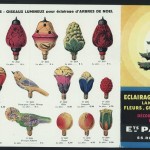
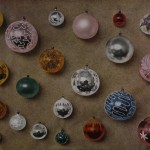
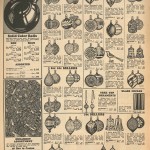
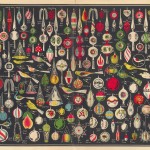
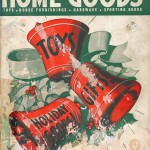
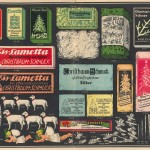
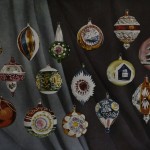
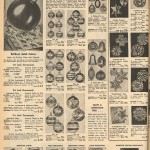
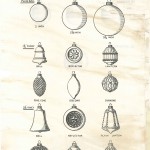
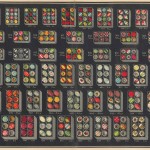
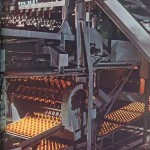
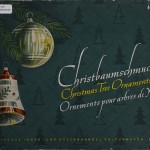

18 comments » Write a comment